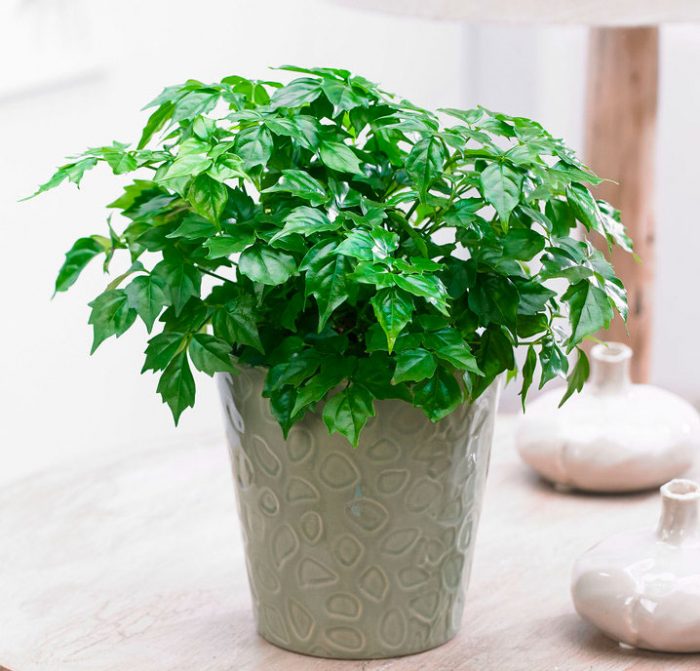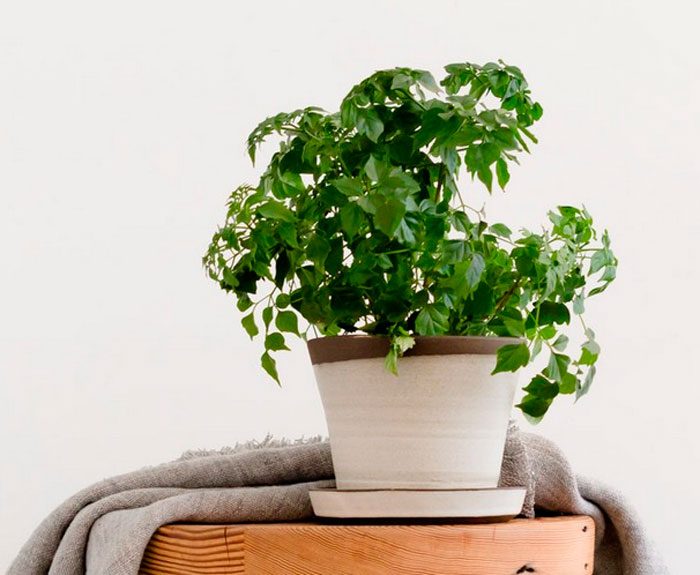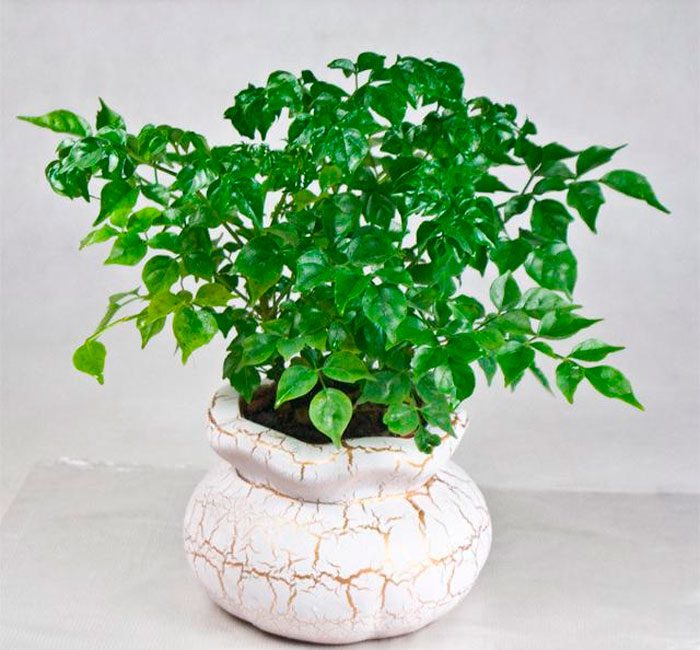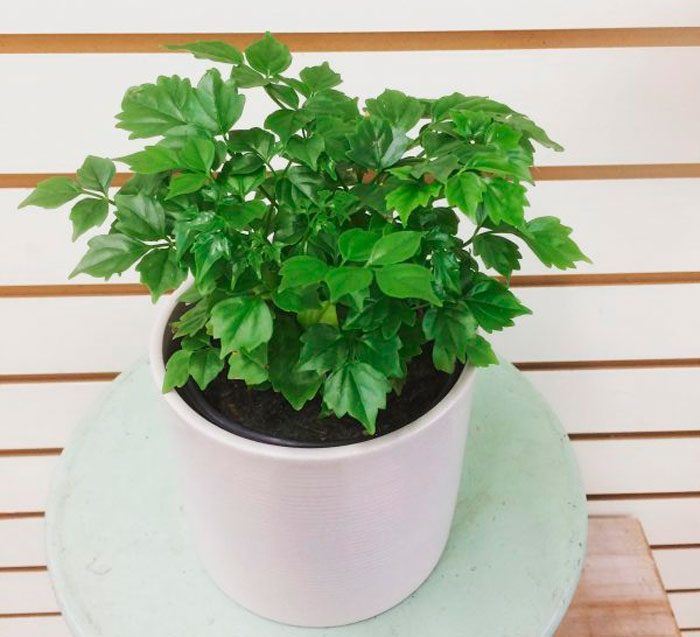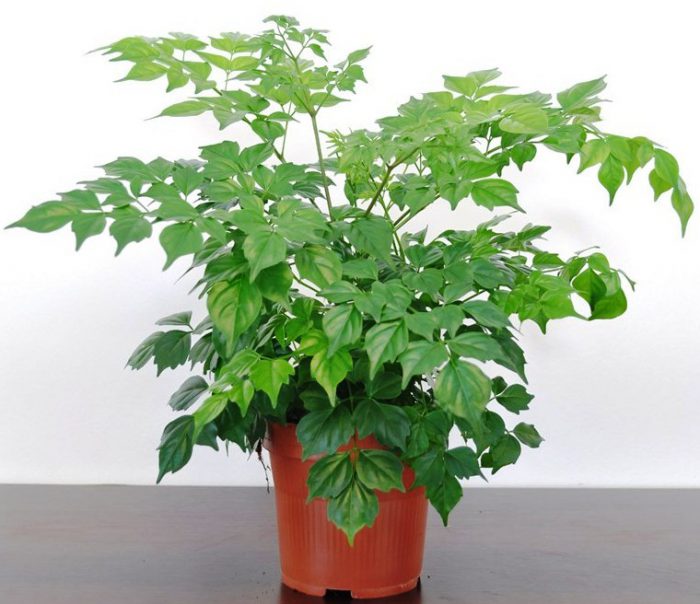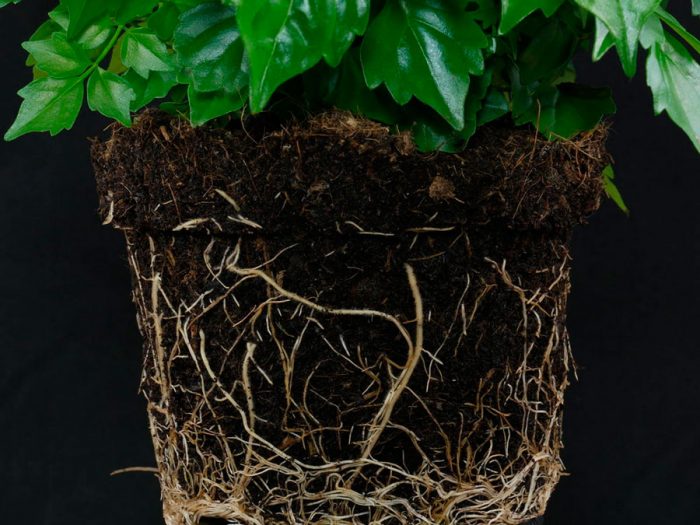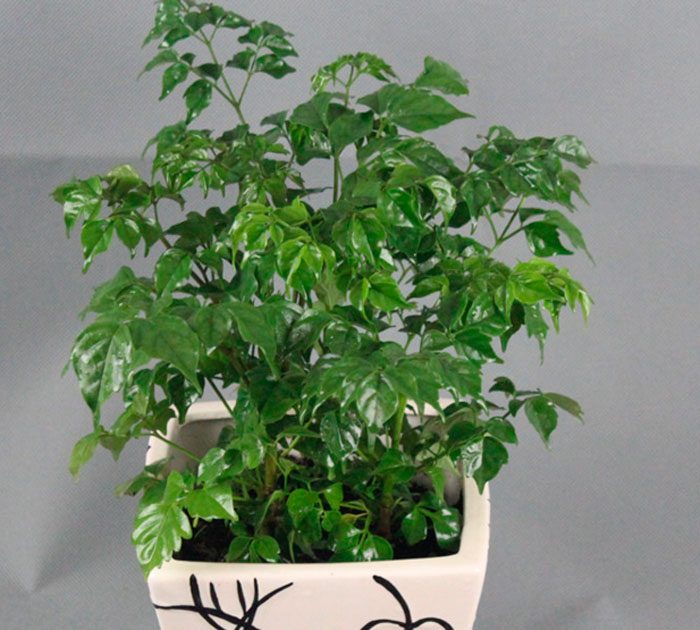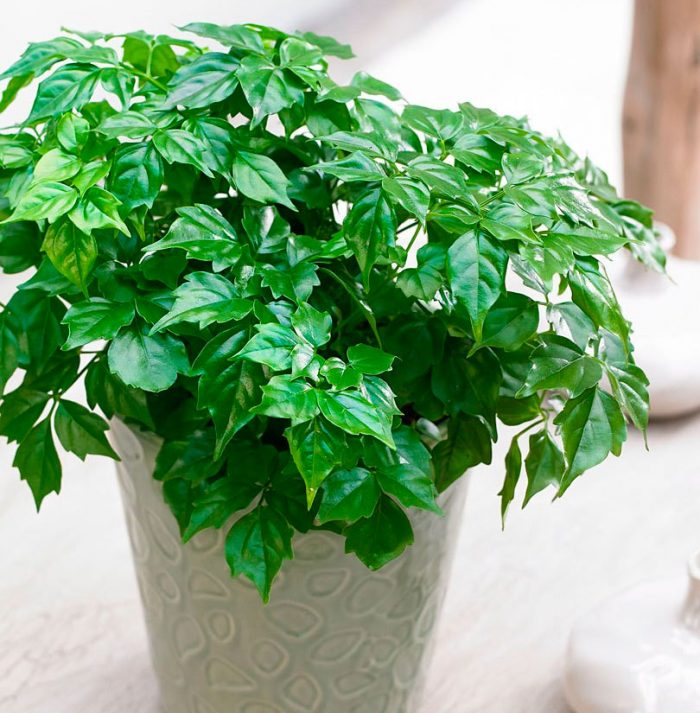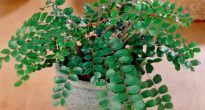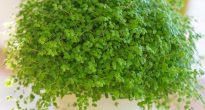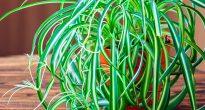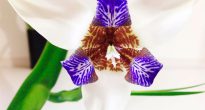The Radermachera plant belongs to the Bignoniaceae family, and is native to East Asia. This genus includes about 15 species. The first description of several species of this plant was made by the botanist Radermacher from Holland, and he discovered them on the island of Java. As a result, this plant got its name in honor of him.
Indoor-grown radermachers have one distinctive feature. Its large green glossy leaf plates are 15 to 25 centimeters wide and 20 to 70 centimeters long. They are divided into many small leaves, which are 20–40 mm long.
Content
Brief description of cultivation
- Bloom... Indoors, it is cultivated as an ornamental deciduous plant. It blooms only in natural conditions.
- Illumination... Grows well in a slightly shaded area, as well as in bright diffused sunlight.
- Temperature regime... During the growing season from 20 to 25 degrees, and in the winter - from 15 to 17 degrees.
- Watering... During active growth, the flower is watered regularly, while the substrate is moistened immediately after its top layer dries. In the winter months, watering is carried out when a couple of days have passed after the top layer of the soil mixture has completely dried.
- Air humidity... Requires high humidity. To do this, the container with the flower is placed on a tray filled with wet pebbles. And on sultry summer days, the air in the room is additionally humidified from a spray bottle.
- Fertilizer... They begin to feed the flower in the second half of the spring period, and finish it in the first autumn weeks. To do this, a complex mineral fertilizer for ornamental deciduous plants is introduced into the substrate once every 15–20 days. In the autumn-winter period, the plant does not need fertilizers.
- Dormant period... It is observed in November – March.
- Transfer... Until the bush is 3 years old, it is transplanted annually in the spring. Then he is subjected to this procedure once every 2 or 3 years.
- Soil mixture... It consists of sod, leaf, peat and humus soil (1: 2: 1: 1).
- Reproduction... Layering and cuttings.
- Pests... Mealybugs, aphids and spider mites.
- Diseases... Problems can arise with a flower only if it is improperly looked after or if it is not provided with suitable growing conditions.
Caring for a radermacher at home
Illumination
Radermacher, grown indoors, does well in light shade. However, it is still better to choose a place for it with bright diffused light. The bush can be placed on the northern windowsill, but in this case, in winter, it may feel an acute lack of light. On a south-facing window, the flower needs mandatory protection from the scorching sun rays. Best suited for a flower are windows facing west or east.
Try to ensure that the flower receives enough light during the winter. If the lighting is excessively scarce, the shoots will begin to stretch, which will make the bush look more like a liana. In order to prevent the flower from growing one-sided, it is regularly rotated little by little around its axis.
Temperature regime
During the period of active growth, the radermaker needs warmth (20-25 degrees). During the winter months, she feels fine at normal room temperature. However, it is best to rearrange the bush for this time in a cool place (from 14 to 18 degrees). The room where the flower stands is systematically ventilated, but do not forget to protect it from drafts.
Watering
In the spring-summer period, the flower is watered abundantly, and this is done immediately after the top layer of the soil mixture in the pot dries out. With the onset of autumn, the frequency and abundance of watering should be gradually reduced. And in winter, the soil mixture in a pot is moistened only after two days have passed after its top layer has dried.
Make sure that the substrate is slightly damp all the time, while in no case do not allow the clod of earth in the pot to dry out. To moisten the soil mixture, use well-settled soft water. Remember that drought and stagnation of fluid in the root system can harm the radermaker.
Air humidity
A room radermaker grows well in high humidity. However, dry air does not do much harm to it. To increase the humidity, the flower is systematically moistened with a spray bottle, while the water temperature should be close to room temperature. Additionally, a flower pot with a bush can be placed on a pallet, into which expanded clay or pebbles are poured and a small amount of water is poured. Make sure that the bottom of the container does not come into contact with the liquid. In the summer, the bush responds well to a warm shower.
Fertilizer
From mid-March to early September, the radermacher is fed once every 15–20 days. For this, a mineral complex is used for decorative deciduous plants. To prepare a nutrient solution, 1 to 2 g of fertilizer is added to 1 liter of water. If for wintering the bush is rearranged in a cool place (no warmer than 20 degrees), then there is no need to feed it.
Pruning
In order for the bush to be lush, it is necessary to regularly pinch the upper buds on the stems.
Transplant Radmacher
While the flower is young (up to three years of age), it should be transplanted once a year. Adult specimens are transplanted only when necessary, when the roots become cramped in the container (on average, once every 2 or 3 years). This procedure is carried out in the spring.
During transplantation, experienced flower growers recommend slightly pruning the roots and pinching the upper parts of the stems a little. The new container should be 20 mm larger than the old one. A soil mixture suitable for transplantation consists of humus, peat, leafy and soddy soil (1: 1: 2: 1). Do not forget to make a drainage layer at the bottom of the pot.


Watch this video on YouTube
Reproduction methods
Cuttings
In late May or early June, cut off the tops of the stems 7–10 centimeters long. For rooting, the resulting cuttings are planted in sand mixed with peat (1: 1).From above, the cuttings are covered with a transparent cap, then they are transferred to heat (from 23 to 25 degrees). Do not forget to arrange systematic ventilation of the cuttings and moisten them with a spray bottle if necessary.
Reproduction by layering
This flower is propagated at home by layering. Select a shoot and make an incision on its bottom surface, which should be about 20 mm long. First, the incision is wrapped with a layer of sphagnum, and then covered with a film on top. Do not forget to systematically moisturize the sphagnum. After the roots are formed at the site of the cut, cut off the shoot and plant it in a small pot (about 16 cm across). However, it is necessary to cut off the layers only when the roots fill the bag completely. Otherwise, the development of a young bush will slow down greatly or it will die altogether. The old bush will continue to grow even after the stem has been cut.
Possible problems
If the room radermacher is not properly looked after, then problems may arise with her:
- Yellowing and flying around foliage... The reason for this is excessively poor lighting. In this case, the lower leaves fly around first, then the middle ones, and at the very end - the upper ones.
- Radermacher's leaves wilted... The bush is experiencing an acute shortage of water. Water it and the foliage will come to life again. It also happens that the foliage wilts due to stagnation of liquid in the root system. In this case, the leaves not only lose their turgor, but also become faded. To save the bush, you need to urgently transplant it into a fresh substrate.
- Radermacher is weakening. Lack of nutrients or poor lighting can be the cause.
- Pulling shoots... In order to exclude stretching of the stems in winter, the bush is transferred to a well-lit place where it is always cool.
- Fading foliage... If the flower stands in shade and is irregularly fed, then this causes the foliage to shrink, which also becomes faded.
- Radermacher leaves dry... This is due to excessively intense lighting or low humidity.
- Pests... Most often, mealybugs, spider mites and aphids settle on the bush.
Types of radermacher
Radermacher Chinese (Radermachera sinica), or radermahia
This species is a highly climbing shrub, the height of which can reach one and a half meters. Experienced flower growers recommend maintaining the height of the bush at the level of 0.7-0.8 m, in this case, the lower leaf plates will not fly around. The length of the pinnate leaf plates is about 0.4 m. The shape of the foliage is elongated-lanceolate, it is shiny, rich green in color, and its edge is serrated. Funnel-shaped tubular flowers are painted in a sulfur-yellow tint. Their opening is observed only at night, while their aroma is very similar to that of a carnation. However, at home, this plant never blooms.


Watch this video on YouTube

